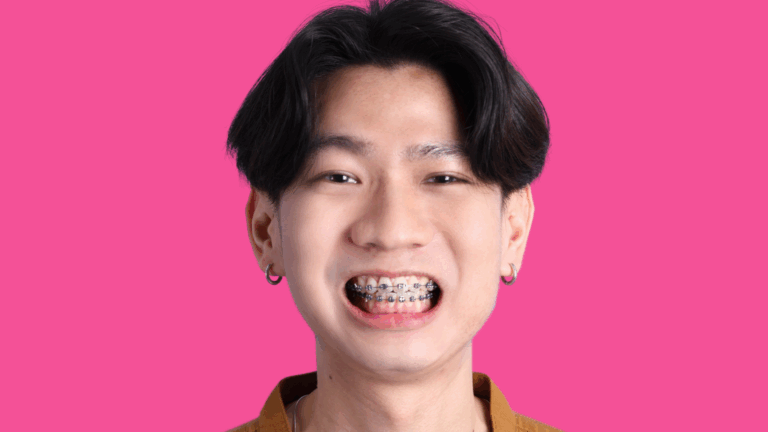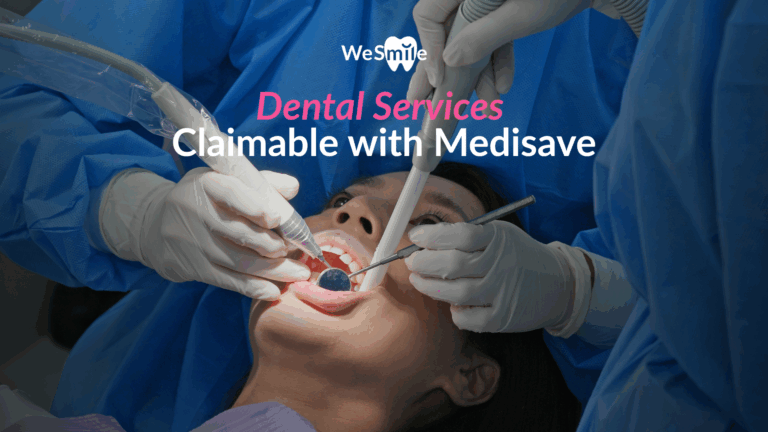At WeSmile Dental, one of the most common questions we receive from patients is: “What’s the difference between Invisalign vs Zenyum?”
Clear aligners have transformed orthodontics, offering a discreet alternative to traditional braces. Both Invisalign and Zenyum promise straighter teeth without the visible wires and brackets. But with different features, technologies, and price points, how do you know which one is right for you?
This detailed guide will walk you through everything you need to know — from how the systems work, to treatment costs, and key differences — so you can make an informed choice about your smile.
What Is Invisalign?
Invisalign is one of the most established and trusted clear aligner systems worldwide. Known for its precision, Invisalign can treat a wide spectrum of cases — from mild spacing issues to more complex bite problems.
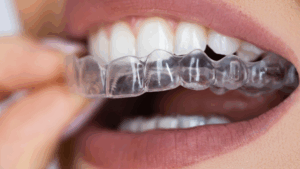
The aligners are made from SmartTrack®, a patented material designed to fit snugly and move teeth gently but effectively. Invisalign has been used by millions of patients globally and is supported by advanced digital planning tools.
How Does Invisalign Work?
Invisalign uses a series of clear aligners to gradually move your teeth into their ideal position.
The process is designed for comfort, precision, and predictable results:
- Consultation & Scans – A thorough assessment with advanced 3D imaging creates a precise digital map of your teeth.
- Digital Treatment Plan – A customised simulation shows how your smile will shift over time.
- Custom Aligners – Clear, removable aligners made from SmartTrack® material gently guide your teeth into place.
- Progress Reviews – Periodic in-clinic visits ensure treatment stays on track.
- Completion & Retainers – Retainers help maintain your new smile long term.
What makes Invisalign stand out is its ability to treat both simple and complex cases while remaining discreet and comfortable.
What Is Zenyum Aligner?
Zenyum is a newer, Singapore-based clear aligner brand designed primarily for mild to moderate alignment concerns.
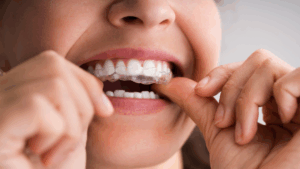
Its hybrid model combines dental clinic assessments with app-based monitoring, offering added convenience. Zenyum is particularly attractive for patients seeking an affordable, no-fuss approach to cosmetic alignment. However, it has more limitations compared to Invisalign when it comes to treating complex bite issues.
How Does Zenyum Work?
Zenyum combines dental expertise with app-based monitoring to straighten teeth more conveniently.
The process is streamlined for simplicity and accessibility:
- Assessment – Start with an online smile check, followed by an in-clinic consultation to confirm suitability.
- 3D Scans & Plan – Digital scans create a customised treatment plan showing how your teeth will move.
- Custom Aligners – Clear aligners are produced to fit snugly and guide teeth into position.
- Hybrid Monitoring – Progress is tracked through the Zenyum app, with dentist reviews both remotely and in clinic.
- Completion & Retainers – Retainers maintain results once treatment is complete.
Zenyum’s hybrid model offers a cost-effective, no-fuss option for patients with mild to moderate alignment needs.
Invisalign vs Zenyum: Key Differences
Choosing between Invisalign and Zenyum often comes down to your treatment needs, lifestyle preferences, and budget. Both are clear aligner systems that straighten teeth discreetly, but they differ in scope, technology, and approach.
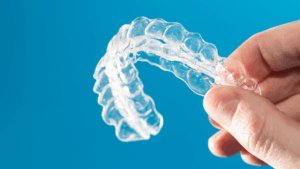
Still unsure which option fits you best? This side-by-side breakdown shows exactly how Invisalign and Zenyum compare across key factors such as treatment scope, comfort, cost, and lifestyle fit.
| Factor | Invisalign | Zenyum |
|---|---|---|
| Treatment Scope | Treats a wide range of cases – from mild spacing to complex bite and alignment issues | Designed mainly for mild to moderate cosmetic corrections |
| Technology | Uses SmartTrack® material and advanced 3D mapping with AI-driven treatment simulations | Relies on 3D scans and customised aligners made from standard clear plastic |
| Monitoring | Regular in-person dental reviews for close monitoring and adjustments | Hybrid model – mix of initial clinic visits and progress tracking through the Zenyum app |
| Treatment Duration | Typically 6 months to 2 years, depending on case complexity | Usually 3 to 9 months for simpler cases |
| Comfort & Fit | Aligners engineered for high precision, durability, and smooth edges for optimal comfort | Comfortable and discreet, though with a simpler design and material |
| Aesthetics | Virtually invisible, with predictable outcomes even for complex cases | Virtually invisible, ideal for those seeking a no-fuss, cosmetic-only solution |
| Cost | Higher investment, reflecting advanced technology and comprehensive care | More budget-friendly, appealing to younger adults and students |
Pro Tip: The best choice comes down to your orthodontic needs, budget, and lifestyle — Invisalign offers advanced versatility, while Zenyum provides a simpler, cost-effective solution.
How Much Is Invisalign?
The cost of Invisalign in Singapore depends largely on the complexity of your case and the length of treatment required.
Invisalign typically ranges from SGD 4,200 to SGD 9,000+, depending on:
- The number of aligners needed
- The complexity of tooth movements
- Duration of treatment
- Any refinements required along the way
Because every smile is unique, the most accurate way to know your investment is through a professional consultation, where a tailored treatment plan and cost estimate will be provided.
Zenyum Price: What to Expect
By contrast, Zenyum price is usually more budget-friendly. Most treatments fall between SGD 2,400 and SGD 3,000+, making it an accessible option for those with simpler cosmetic needs.
The trade-off for this lower price is the narrower range of cases that can be successfully treated compared to Invisalign.
Invisalign vs Zenyum: Which One Works Better for You?
Choosing between Invisalign and Zenyum depends on your smile goals, treatment complexity, and lifestyle preferences. Here’s a simple guide to help you decide:
✅ Choose Invisalign over Zenyum if…
- You have moderate to complex dental issues such as bite problems or significant misalignment.
- You want the assurance of advanced technology and proven results trusted worldwide.
- You prefer regular in-person check-ups with your dentist for close monitoring and adjustments.

✅ Choose Zenyum over Invisalign if…
- Your case is mild and mainly cosmetic, such as minor crowding or spacing.
- You value convenience, with fewer clinic visits and progress tracked through the Zenyum app.
- You’re looking for a more budget-friendly option to improve your smile without extensive orthodontic treatment.
Quick Takeaway: Invisalign is the comprehensive solution for complex needs, while Zenyum is the fuss-free choice for simpler corrections.
Invisalign vs Zenyum: Lifestyle Considerations
Both Invisalign and Zenyum are designed to integrate seamlessly into everyday life, offering discreet treatment without major disruptions. Here’s what to expect:
- Eating & Drinking – Since both systems use removable aligners, you can continue enjoying your favourite foods and drinks without restrictions. Simply remove the aligners before meals and pop them back in after brushing.
- Oral Care – Daily brushing and flossing remain easy and effective, as there are no brackets or wires to get in the way.
- Discipline & Consistency – For results to stay on track, aligners must be worn 20–22 hours a day. Commitment and consistency are key, regardless of the system you choose.
- Convenience & Follow-ups – Zenyum offers fewer in-clinic visits with progress tracked via the app, making it appealing for those with busy schedules. Invisalign, on the other hand, provides more detailed, in-person reviews for patients who value close professional oversight.
Meet Our Aesthetic Dentist: Dr. Khoo Huan Ding

Leading WeSmile Dental’s cosmetic services is Dr. Khoo Huan Ding, a passionate and people-centred dentist with international experience in the UK, Hong Kong, and Singapore.
Holding a Masters in Aesthetic Dentistry from King’s College London, Dr. Khoo combines world-class expertise with a gentle, ethical approach—focusing on minimally invasive treatments that preserve natural tooth structure.
Her personalised care is grounded in evidence-based methods and open communication, allowing patients to co-create radiant, natural-looking smiles that align with their unique goals.
Committed to staying at the forefront of dental innovation, Dr. Khoo crafts treatment plans that balance aesthetics with long-term oral health—building smiles that last.
Invisalign vs Zenyum: Taking the Next Step
When it comes to choosing between Invisalign and Zenyum, there’s no one-size-fits-all answer. Every smile is unique, and the right choice depends on your dental needs, goals, and lifestyle. That’s why a professional consultation is the most reliable way forward.
At WeSmile Dental, our experienced dentists will take the time to understand your concerns, examine your teeth with precision, and guide you through the options.
👉 Book your appointment with WeSmile Dental today — and take the first step towards a healthier bite, better confidence, and a smile you’ll love for years to come.
FAQs About Invisalign vs Zenyum
1. Are Invisalign and Zenyum equally effective?
Not necessarily. Invisalign can treat mild, moderate, and complex cases, while Zenyum is best suited for mild to moderate alignment issues. Effectiveness depends on your dental needs.
2. Do I need to wear retainers after aligners treatment?
Yes. Whether you choose Invisalign or Zenyum, retainers are necessary to maintain your results and prevent teeth from shifting back.
3. Which is more discreet — Invisalign vs Zenyum?
Both are made of clear, nearly invisible plastic. In most cases, people will not notice you are wearing aligners.
4. How many hours a day do I need to wear aligners?
For the best results, aligners should be worn 20–22 hours daily. They should only be removed for eating, drinking (except water), brushing, and flossing.
5. How do aligners compare to braces?
Aligners are removable, discreet, and generally more comfortable, making them easier to fit into daily life. Braces, on the other hand, are fixed and more visible, but they can treat even the most complex orthodontic cases where aligners may not be sufficient.

